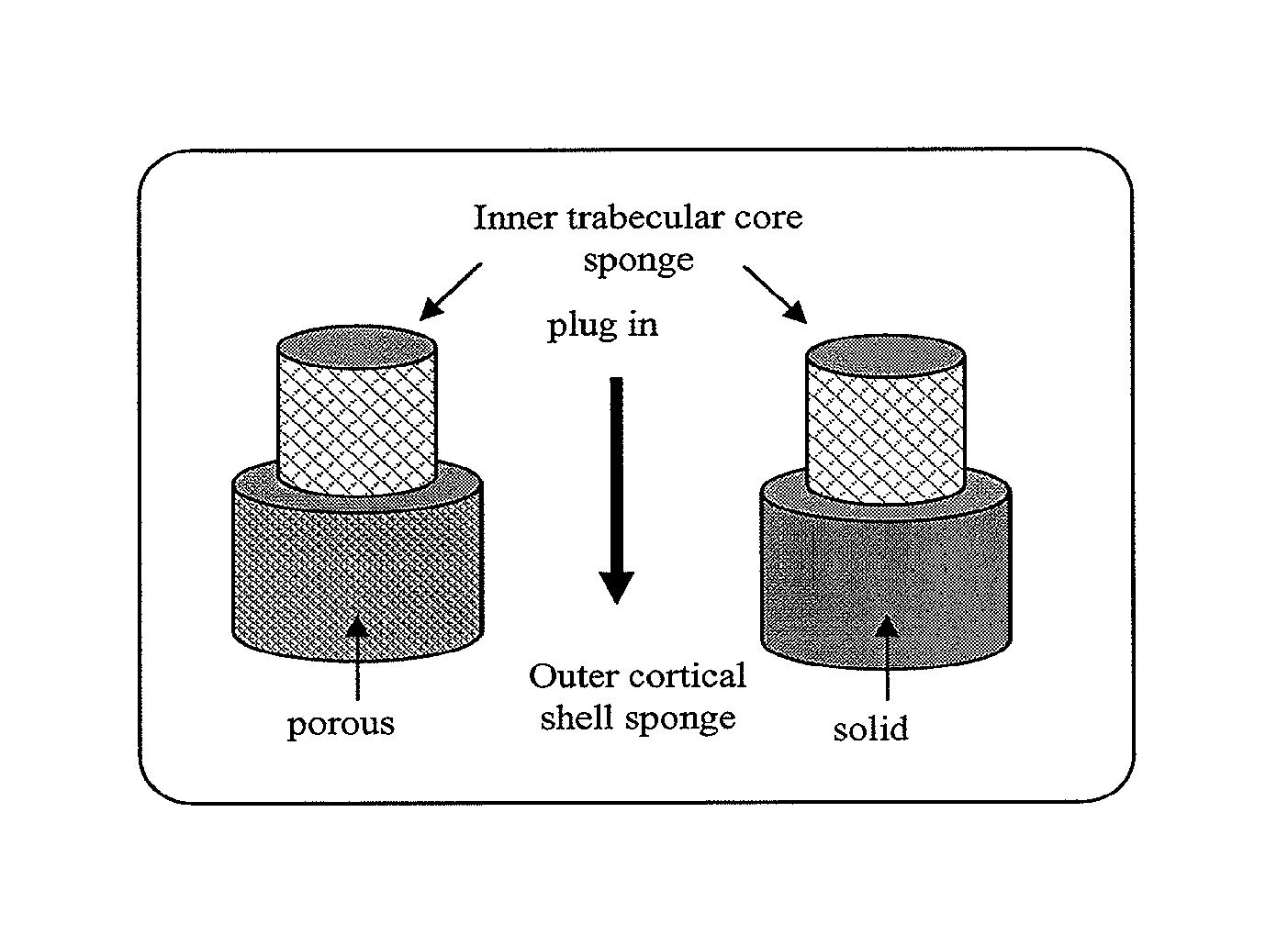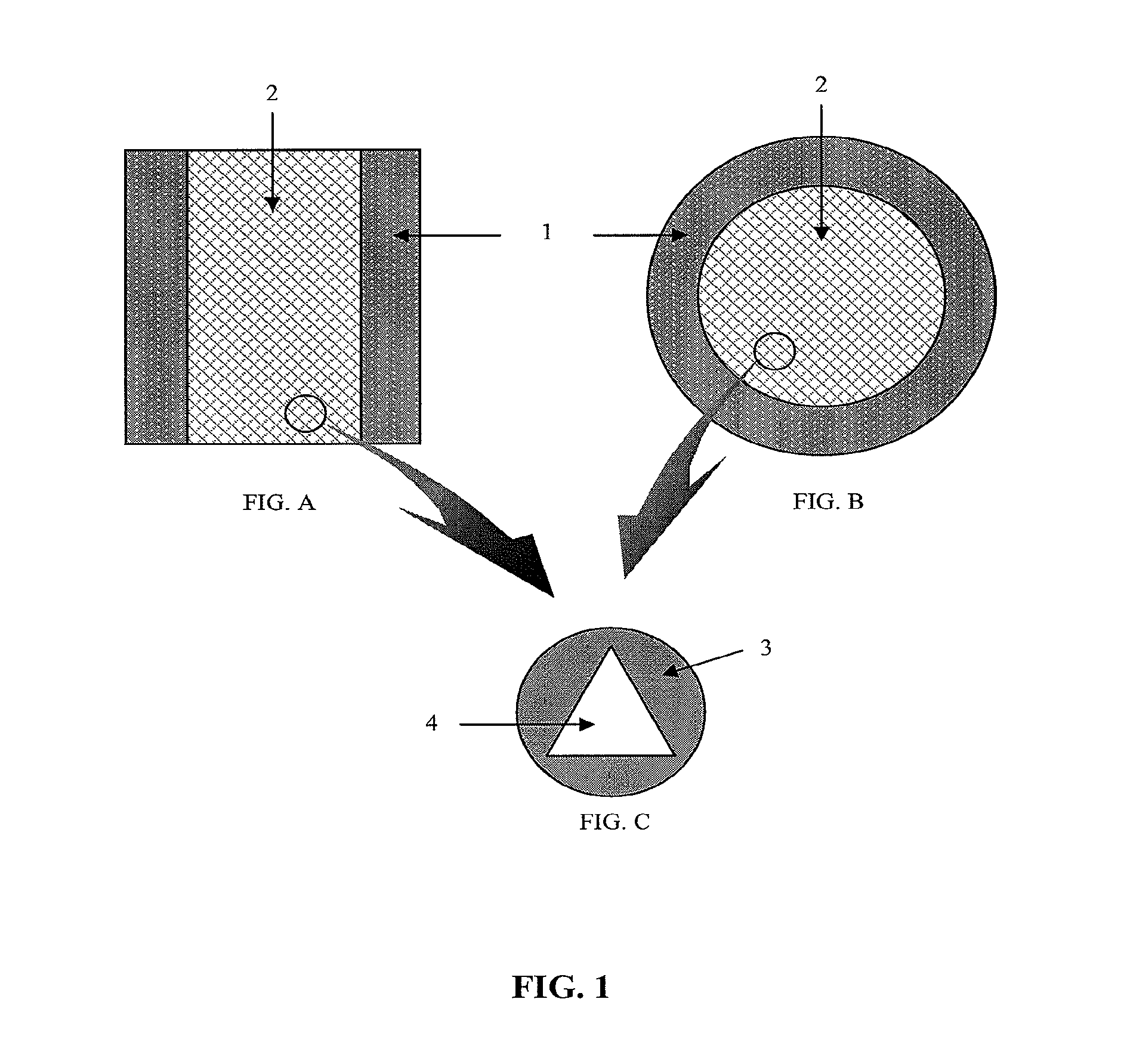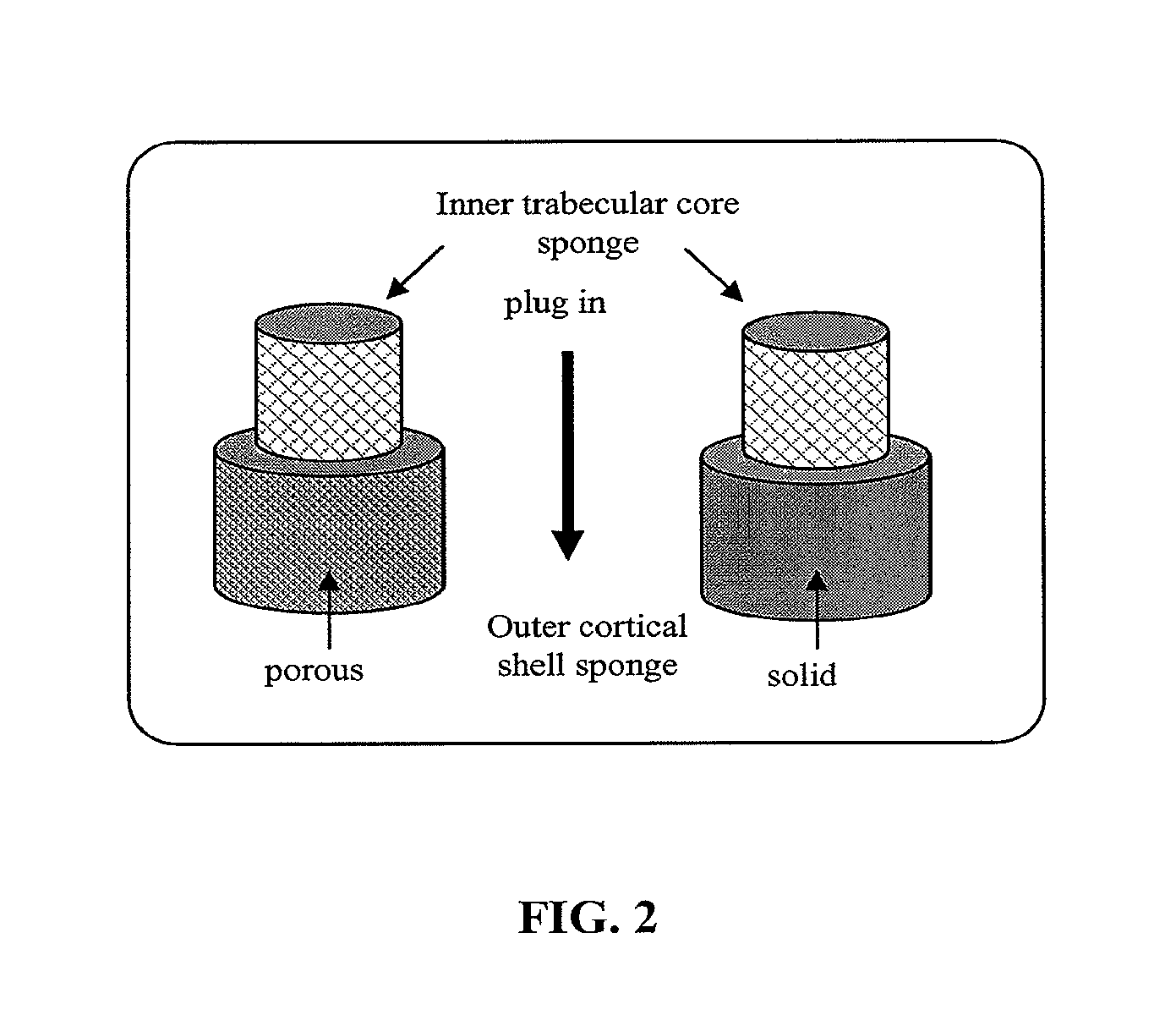Bi-layered bone-like scaffolds
a scaffold and bone technology, applied in the field of biomedical scaffolds, can solve the problems of inability to identify the ideal material and fabrication technique for optimal bone tissue regeneration, the failure to bring these technologies to the clinic, and the limitations of each material and/or techniqu
- Summary
- Abstract
- Description
- Claims
- Application Information
AI Technical Summary
Benefits of technology
Problems solved by technology
Method used
Image
Examples
example 1
Procedure for Porous Calcium Phosphate Scaffold Fabrication
1.1 Polymeric Sponge Template Preparation
[0112]Selection of the template material: A polyurethane (PU) sponge template is used to produce uniform interconnected porous calcium phosphate scaffolds. This sponge is used to provide the primary structure for the formation of the scaffold struts as well as the formation of secondary microchannels within the scaffold struts. The polyurethane sponge template chosen may range from 45 pores per inch (ppi) to 80 ppi for the inner trabecular core, depending on the final desired pore size. The pore sizes in the inner trabecular core may range from 150 μm to 800 μm after sintering to allow bone cell migration, blood vessel vascularization, and nutrient supply. Additionally, the 80 ppi to 100 ppi polyurethane sponge template or solid calcium phosphate ceramics (with channels and / or pores produced by slip casting) may be chosen for the outer cortical shell, depending on the final desired po...
example 2
Examples of Fabricated Hydroxyapatite Scaffolds
[0126]Using the process described in Example 1, an example on how this technology is used to fabricate hydroxyapatite scaffolds coated with silver-doped hydroxyapatite is as follows:
2.1 Polymetric Sponge Template Preparation for bi-layered Porous Scaffold Fabrication:
[0127]A 60 ppi (pore per inch) polyurethane sponge template is chosen for trabecular core fabrication and the 100 ppi polyurethane sponge template is chosen for outer cortical shell fabrication. The polyurethane sponge template for the trabecular core is cut to a shape of a solid cylinder with a length of 36 mm and a diameter of 28 mm. The polyurethane sponge template for the outer cortical shell is cut to resemble a cylindrical pipe and is hollow core in the middle. Dimension for the polyurethane sponge template for the outer cortical shell is 36 mm in length, with an outer diameter of 30 mm and an inner diameter of 28 mm, thereby having a 2 mm wall thickness. These polyur...
example 3
Examples of Properties of Hydroxyapatite Scaffolds
[0152]The materials discussed below were prepared by the methods of Example 1 and Example 2.
3.1 Polymeric Sponge Template
[0153]After 20 minutes of treating the polymeric sponge template with 10% sodium hydroxide, the surface of the sponge is changed from smooth to rough and is more hydrophilic. As shown in FIG. 7, the shape of the originally cut sponge remains intact, together with its elastic property.
3.2 First Time Calcium Phosphate Coated, Dried and Sintered Scaffold
[0154]After immersing the treated polyurethane sponge template in a first time coating slurry followed by drying at 27° C. in a 80% humidity environment for 60 hours, the bi-layered calcium phosphate coated sponge template appears hardened. The coated surface also appears dense and smooth, with only a few cracks observed. Additionally, the scaffold shrinks by 8%.
[0155]After sintering the coated sponge using a 8-step sintering profile shown in FIG. 3, the resulting scaf...
PUM
| Property | Measurement | Unit |
|---|---|---|
| pore diameter | aaaaa | aaaaa |
| pore diameter | aaaaa | aaaaa |
| diameter | aaaaa | aaaaa |
Abstract
Description
Claims
Application Information
 Login to View More
Login to View More - R&D
- Intellectual Property
- Life Sciences
- Materials
- Tech Scout
- Unparalleled Data Quality
- Higher Quality Content
- 60% Fewer Hallucinations
Browse by: Latest US Patents, China's latest patents, Technical Efficacy Thesaurus, Application Domain, Technology Topic, Popular Technical Reports.
© 2025 PatSnap. All rights reserved.Legal|Privacy policy|Modern Slavery Act Transparency Statement|Sitemap|About US| Contact US: help@patsnap.com



